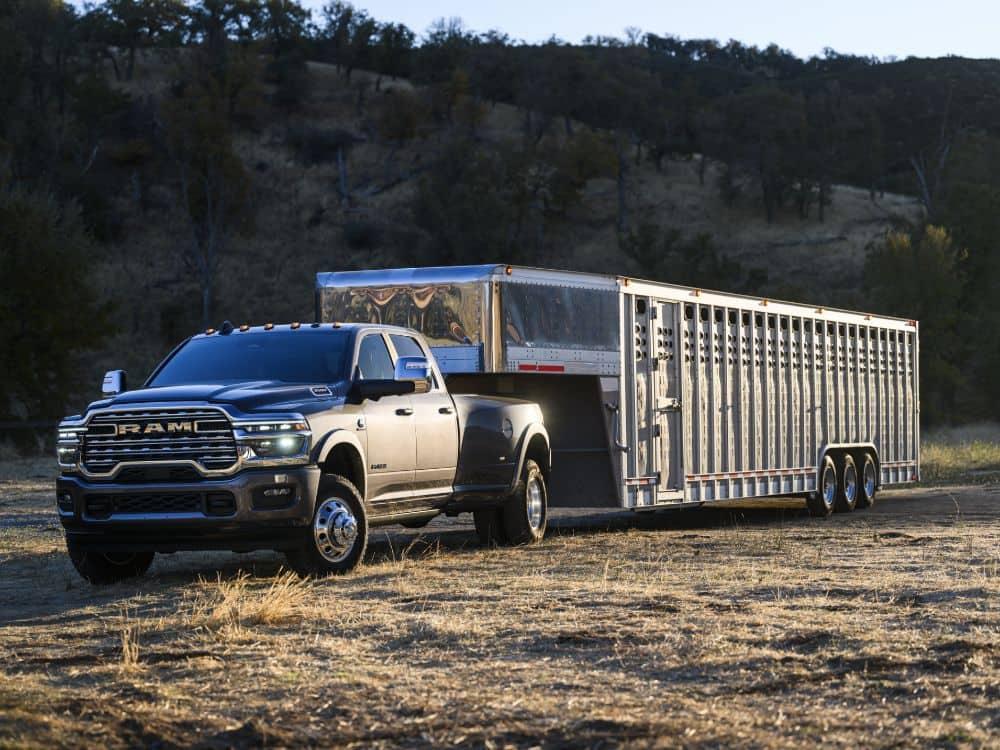While the heavily discounted price of an unsold Ram truck is appealing, a prolonged stay on a dealership lot exposes the vehicle to risks beyond simple cosmetic wear. Buyers must use the Vehicle Identification Number (VIN) to proactively investigate potential hidden damage before finalizing the purchase.
I. Risks Associated with Long-Term Storage (Aged Inventory)
Inventory aging means the truck has been exposed to elements and operational lapses that vehicles sold quickly usually avoid.
1. Environmental and Weather Damage
- Hail and Storm Damage: Trucks sitting outdoors are prime targets for minor or moderate hail damage. While a dealer may perform “paintless dent repair” (PDR), the history of the event should ideally be documented.
- Fading and Oxidation: Extended UV exposure can subtly damage paint finishes, headlights, and plastic trim before the first owner takes possession.
- Rodent Infestation: Vehicles left stationary for months can become nesting grounds, leading to chewed wiring harnesses (a potentially severe electrical problem) or damage to cabin filters.
2. Mechanical and Battery Degradation
- Battery Health: Modern vehicles, including Ram trucks, draw parasitic current. Extended periods without starting can kill the battery, requiring jump starts or full replacement, which can stress the electrical system.
- Tire Flat-Spotting: Leaving a heavy truck stationary for many months can cause tires to develop temporary or permanent flat spots, leading to vibrations once driven.
- Brake Rotor Rust: Sitting idle in humid or rainy conditions causes surface rust on brake rotors, which requires driving the truck to wear off, but signals prolonged inactivity.
II. The Role of the Vehicle History Report (VIN Check)
The VIN report is the buyer’s primary defense against undisclosed issues. However, its effectiveness depends on what has been officially reported.
1. What to Look for in the Report
- Undisclosed Accident History: The report may show minor incidents, even if the vehicle never left the dealer’s possession (e.g., parking lot fender benders).
- “Other Events”: Look closely at generic entries like “Vehicle serviced” or “Inspection performed.” High-quality dealers will document storm or hail repairs, but others may attempt to mitigate damage without creating an official record.
- Open Recalls: Aged inventory trucks are often subject to manufacturer recalls issued since their production date. Confirm that all open recalls have been properly completed and documented before sale.
2. Limitations of the VIN Report
The most significant risk is the **”Unreported Repair.”** If a dealer fixes minor cosmetic damage (like PDR for hail, or paint touch-ups) in-house without filing an insurance claim or creating a formal record, the VIN report will show a clean history. Buyers must rely on physical inspection.
III. Buyer Due Diligence Beyond the Report
No VIN report replaces a thorough physical inspection of the truck.
1. Essential Physical Checks
- Paint and Panel Alignment: Check for inconsistent paint texture or mismatched panel gaps, especially around the roof, hood, and pillars (key hail damage areas).
- Tire Dates: Inspect the four-digit DOT date code on the tires. If the truck is a 2023 model but the tires have a 2022 DOT date, that is normal. However, look for signs of uneven wear from long-term stagnation.
- Electrical Systems: Confirm all major electronic components (infotainment screen, power seats, cameras) are fully functional, as these are often sensitive to low battery voltage from prolonged storage.
2. Warranty and Certification
Ensure the dealer guarantees that any repairs conducted while the vehicle was in inventory are covered by the standard factory warranty. Ideally, seek a **Certified Pre-Owned (CPO)** equivalent classification, though this is rare for new, unsold stock.

